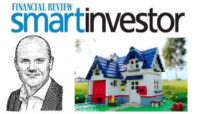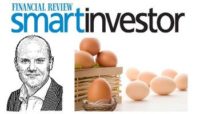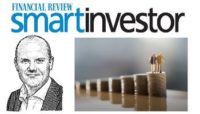The attraction of owning property is clear – you can touch it, you can see it and you have the peace of mind that it will be there tomorrow and the day after.
By independent financial planner Tim Mackay.
As an ex-property analyst at Deutsche Bank, I have an abiding passion for property investing, but I recognise that it is not for everyone.
I make a distinction between buying a home and buying property as an investment. Buying your own home can be as much an emotional decision as it can be a financial one. At its most basic, you can hammer nails into the wall without first asking anyone’s permission.
Financially, your home provides no income (rent) and when it comes time to sell it you’ll invariably have to spend even more on your next home so you’ll likely save little. By comparison, a good investment property should provide you with both income (net rent) and capital growth over time.
Show me the numbers!
Whenever a client brings me an investment property idea, before we look at the financing options, I analyse key metrics which enable me to advise whether it’s likely a good investment or not. First, estimate the total acquisition price (including purchase price, legal costs, stamp duty, financing costs, property inspection costs). Next, estimate the gross weekly rent and the ongoing costs (management costs, rates/levies, land tax, insurance, ongoing maintenance costs).
For example, if the total acquisition cost is $500,000 and the rent is $485 per week ($25,289 pa), then the gross yield on this investment is 5.1 per cent ($25,289/$500,000). If ongoing costs are $110 per week ($5,736 pa) then the net rental yield is 3.9 per cent (($25,289 – $5,736)/$500,000).
Compare the pair
We can compare the net rental yield to alternatives such as equities or commercial property. For example, the comparable net dividend yield from the ASX 200 is 4.2 per cent (or 5.5 per cent after franking credits) while the net rental yield on the S&P/ASX 200 A-REIT Index is 5.48 per cent. Both of these available income returns are higher than the net rental yield, which could indicate the acquisition cost of the property may be too high or the rent not high enough.
Capital growth, and tax benefits
However, while the above analysis is useful, it doesn’t take into account the potential for capital growth or the tax advantages financing can offer. Capital growth in property is so dependent on the old adage ‘location, location, location’. You can buy the right property in the wrong location but unfortunately you just can’t move it.
My top tip is to get good advice from a reputable real estate agent who is on the ground in your selected suburb(s). They will know that market better than anyone.
When it comes to financing, only utilise as much debt as you feel comfortable supporting from your family’s cash flow. Leverage can add to your returns but it can also exacerbate losses and you need to sleep comfortably at night.
Contrary to what many accountants seemingly believe, the whole purpose of property investing should be to maximise your capital growth and income return, not to maximise your tax deductions. The investment needs to stand on its own two feet and any tax benefit just adds to the investment thesis.
Create an income stream
If you are approaching retirement, a key goal should be to create a dependable and growing income stream. A well tenanted property with good capital growth potential as part of a well-diversified portfolio can provide a winning income strategy.
Optimise your structuring
In a previous series of three SMSF articles, I examined how holding a property in your SMSF can be an attractive strategy. Combining an investment property with your SMSF and a limited recourse borrowing arrangement can set you up well for retirement. Seek SMSF specialist advice and beware the many property spruikers flocking to this space.
8 DO’S AND DONT’S OF PROPERTY INVESTING
1. Do know the key risks – interest rate risk, vacancy risk, tenant risk. Have insurance.
2. Do focus on both income and capital returns.
3. Do be aware that property is a lumpy asset. You can’t sell a living room.
4. Do be aware that transaction costs are relatively high.
5. Don’t put all your eggs in one basket. Property should be part of a diversified portfolio.
6. Don’t fall in love with a property. Another potential investment is literally around the corner.
7. Don’t wait forever for an investment to ‘come good’. If a property is not holding its weight, sell it.
8. Don’t rush. Any deal that supposedly must be done today is not a deal for you.
_______________________

Tim Mackay BEc (Hons) MBA CA CFP SSA
I am an independent financial planner, SMSF expert and company director. I thrive on providing independent, expert financial advice to my wonderful clients. With international investment banking experience at Deutsche Bank and UBS in London and New York, I was recognised as SMSF Advisor of the Year by Independent Financial Advisor Magazine.
To contact me, speak to my team on 02 8084 0453. Please feel free to connect with me on LinkedIn or on Twitter. You can also visit the my colleague’s (and sisters) website.








Leave A Comment